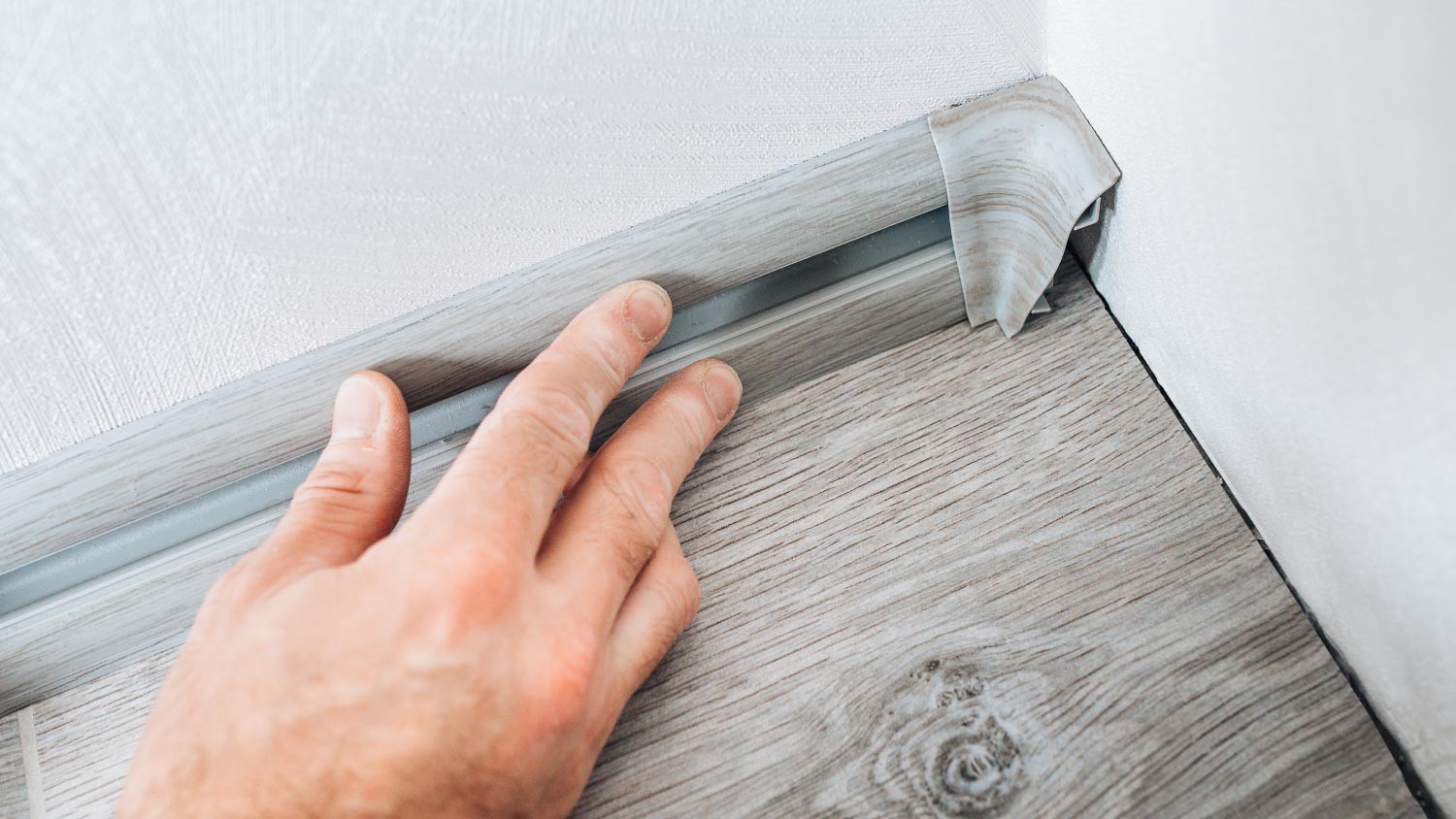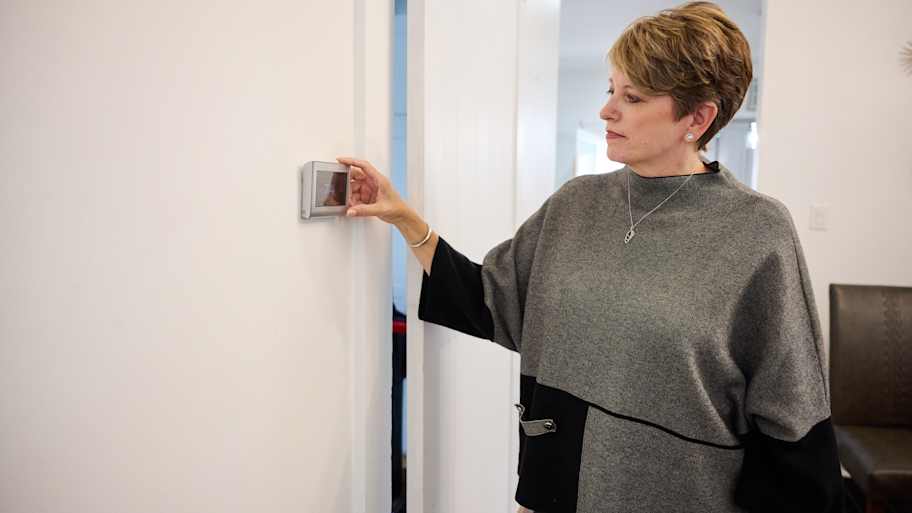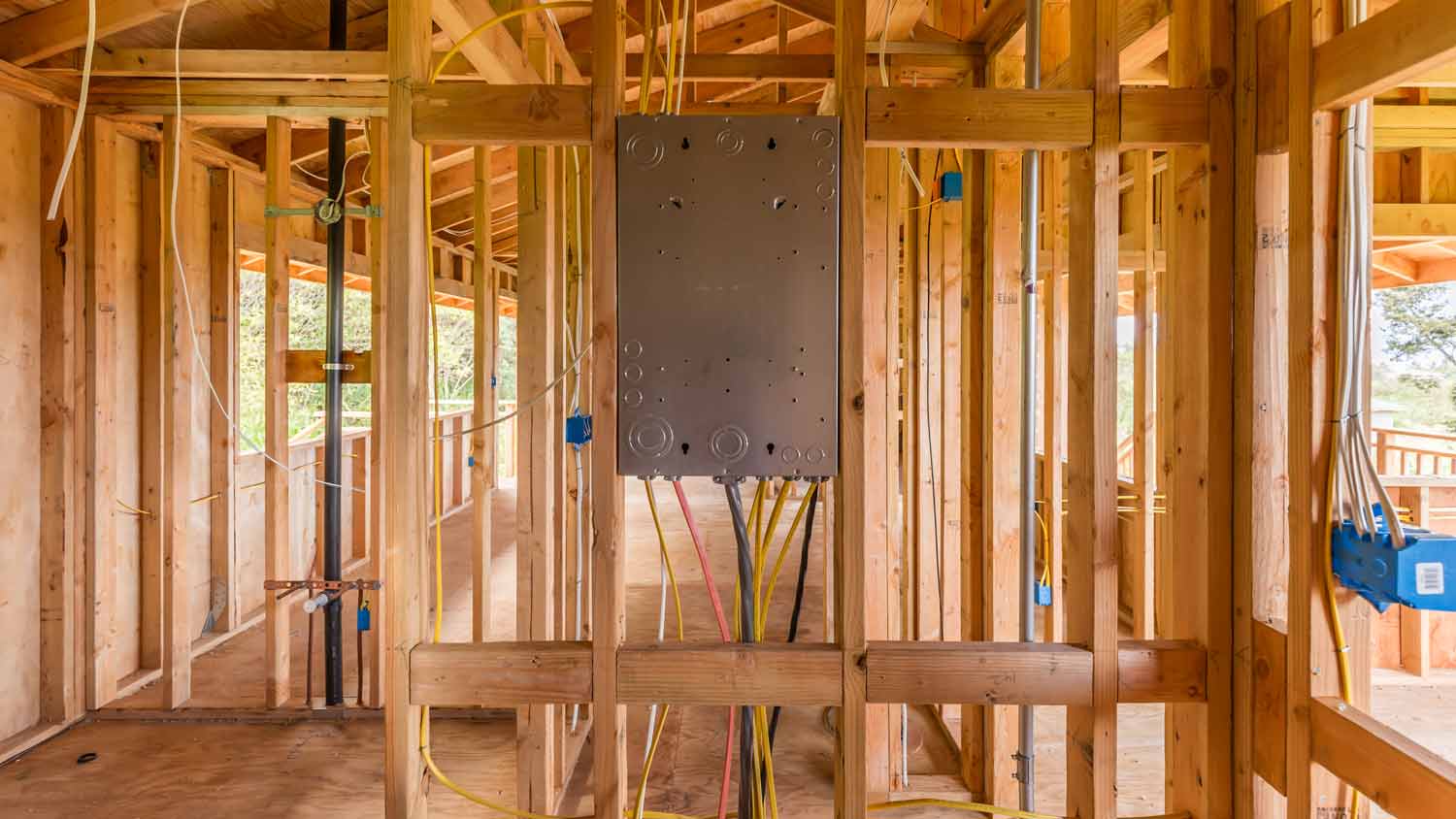How To Hide Electrical Cords, Wires, and Cables in Your Home
Keep those pesky electrical cords out of sight and out of mind


After designing a room to fit the aesthetic of your home perfectly, the last thing you want to see are electrical cords, wires, and cables snaking out of every outlet. But how can you avoid this eyesore while still powering your electronics? Don’t worry; we have 11 tips to keep those cables out of sight for good.
1. Run Wires Behind the Door Frame Molding
Door frames make a great hiding spot for cords, cables, and wires that would otherwise be underfoot in the doorway. The best way to hide your cords in a door frame is to remove the molding using a small pry bar and fit the cord in question into the small space between the wall and the door. If there isn’t space available, use a knife or a paint scraper to make a small ravine in the drywall. Then, affix the cord into the drywall using a few staples. Finally, replace the molding, and check to see whether the cords are still visible.
2. Cut Into the Drywall
If you have a wall-mounted TV, the cords and cables dangling off of it can seem distracting. Luckily, you can solve this problem when you or a pro mounts your TV. Once you’ve measured where your TV will hang on the wall, use a drill to make two holes below the mounting holes—one close to your TV and one further down by the power outlets. Then, once your TV is in place, run the power cord in and out of the holes to power up your device without leaving the cables out.
3. Hook Cords onto the Back of Your Media Center
It may seem next to impossible to hide cords and cables in a media center, but it doesn’t have to be that way. Start by lining the back of your cabinet or media center with small nails or adhesive hooks. That way, you can run any necessary wiring behind the media center and tuck them into your line of nails or hooks.
4. Hide Cables Behind Your Couch
While there are several products on the market designed to help you hide cords and cables, the original wire-concealer is already in your home—it’s your couch! If possible, run cords, wires, and cables behind your sofa. With this tactic, you can still access the electrical cords as needed, but they’re out of sight and out of mind for daily purposes.
5. Conceal Cords with Cord Covers
Cord covers are a useful tool to use when you need to run wires through a doorway or up a wall. These flat opaque slats prevent people from tripping over your cords or seeing them creep up the wall. Plus, cord covers come in various sizes and colors, or you can paint them to lower the cover’s profile in your home. The average cost of a white cord cover is $10 to $150, depending on its length.
6. Use Cable Sleeves for Multiple Wires
Cable sleeves are a lot like cord cables, except they hold and conceal more than one cable. Their unique circular design (think rotary phone cord) helps to fit several wires and cables inside of each sleeve. That said, its circular design might draw more attention than cable covers. The cost of a cable sleeve starts at $20.
7. Try Baseboard Channels

Baseboard channels are another solid option for hiding your cords, especially in a rental property. This tool works similar to both cable sleeves and cord covers, except baseboard channels run along the base of your floor. Simply run them horizontally at the base of your walls using nails or adhesive tape. You’ll pay between $6 and $9 per linear foot for baseboard channels.
8. Modify Desks or Nightstands
Remember the trick we discussed earlier about drilling holes into the drywall to keep your cords out of sight? That trick also works with desks and nightstands. To hide the cords that take up space on your nightstand or desk, simply drill as many holes as needed into the back of the drawers. Then, you can run the cords through the drawer holes and charge your items without anyone being none the wiser.
9. Purchase a Double Shelf Nightstand
Are you interested in hiding the cords on your nightstand, but not wild about the idea of using a drill? No worries; many modern nightstands and end tables have a double shelf. This open compartment is covered by the top of your nightstand. The second shelf does not usually have a back or a drawer, which means you can easily run cables behind it and charge your devices there.
10. Repurpose a Double-Handled Basket
One of the easiest ways to conceal your cables is to create a designated charging station using a double-handed basket. Many home stores sell assorted wicker or other types of double-handled baskets, which are perfect for solving your unsightly wiring problem. To try this solution, simply place a basket near a high-traffic outlet, and then run your cords and cables through the back-facing handle.
11. Get Crafty
If you search online, you’ll quickly find that DIYers have created several unique solutions for hiding cords and cables around your home. Here are a few DIY projects to hide your wires:
Shoebox Charging Station
Instead of buying a double-handled wicker basket, you can cut out holes in a shoebox, decorate it with washi tape, and then use the box as your device-charging station.
Faux Book Covers
Hate how your phone and its charging cord look on your bedside table? For a creative fix, cut out the inside of a used book and keep your phone nestled among your favorite pages.
Knitted Cord Covers
Knitted cord covers are an adorable DIY solution to your cluttered cable problem. Simply knit a colorful, hollow tube and slide it over your cords. There are several tutorials available for plucky knitters who may want to try their hands at knitting their own unique cord covers.



.jpg?impolicy=leadImage)

- Home Generator Repair
- Lamp Repair
- Electric Repair
- Generator Installation
- TV Antenna Services
- Emergency Electricians
- Commercial Electricians
- Attic Fan Installation
- Attic Fan Repair
- Exhaust Fan Installation
- Electric Inspectors
- Subcontractors
- Electrical Construction
- EV Charger Installer
- Chandelier Installation
- Doorbell Installation
- Bathroom Fan Installation
- Ring Installers
- Electrical Panel Upgrade
- 6 Clever Tips for Keeping TV Wires Out of Sight
- How to Prevent Electrical Fires at Home: 13 Helpful Tips
- 8 Types of Electrical Wires You Can Find in Your Home
- Who Can Run Ethernet Cable Through Your Walls?
- Who Installs Roof Heat Cables?
- Are Roof Heat Cables Dangerous? What You Should Know
- Everything You Need to Know About a Garage Door Cable Diagram
- How to Prep Your Home for the Biggest Game of the Year
- How To Install Under-Cabinet Lighting: Step-by-Step Guide
- 10 Christmas Safety Tips for the Holiday Season










